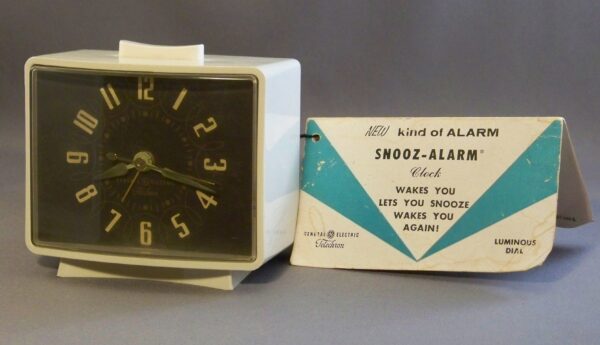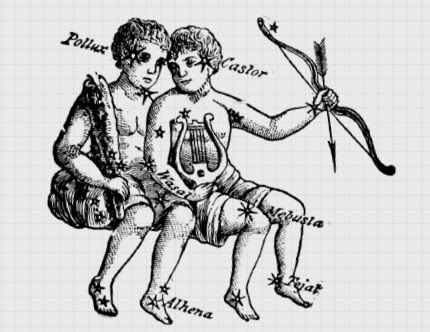Happy New Year! We’re starting 2025 with four more mini stories! This week we have a sleepy button, electric signs, a very important sticker, and video you can smell. Let’s get into it!
Snooze Buttons
In the 1950s, General Electric changed alarm clocks forever by adding a snooze button. On top of the clock there was a big fat bar labeled “SNOOZE” and it could not be missed. One smack of the clock and presto, you just bought yourself a little more sleep. The first Snooz-Alarm clocks were built to let you snooze for 10-15 minutes. However, mass production required some standardization and in the 1950s a double digit snooze was too complicated to program into the gears of a clock at scale. So GE got as close as they could with a nine minute snooze.After millennia of trying to get ourselves out of bed at a certain time, the Snooz-Alarm dared to ask – …do you really have to get up right now? And across the country people more or less said…no…I don’t. The clock was a major hit. And as the technology improved, a few competitors ended up offering alternatives to the nine minute snooze. Like the Westclox DROWSE alarm clock.
The first Snooz-Alarm clocks were built to let you snooze for 10-15 minutes. However, mass production required some standardization and in the 1950s a double digit snooze was too complicated to program into the gears of a clock at scale. So GE got as close as they could with a nine minute snooze.After millennia of trying to get ourselves out of bed at a certain time, the Snooz-Alarm dared to ask – …do you really have to get up right now? And across the country people more or less said…no…I don’t. The clock was a major hit. And as the technology improved, a few competitors ended up offering alternatives to the nine minute snooze. Like the Westclox DROWSE alarm clock.
The Westclox alarm clock gave people the option of snoozing for 5 minutes or 10 depending on if you hit the DROWSE button on its left side or right side. But the DROWSE button didn’t have that sweet simplicity. Nobody wants to wake up and think about how much longer they want to sleep. People just want to sleep more. And the SNOOZ button gave us that. Or at least that’s what we thought. Despite the fact that many of our phones are still factory preset to snooze for 9 minutes – today we all know deep down that the snooze button doesn’t really give us meaningful sleep. And it also doesn’t let us rise. Instead it catches us at our weakest moment. When we are least capable of making decisions. When it’s far easier to slap a button than to put two feet on the ground. In the end, the key to waking up might just rest in not giving yourself any other options. And the key to more sleep? Who knows?!



Comments (5)
Share
Those red triangles for fire fighters are also in China! Neat!
Regarding the fire escape windows, I have something even better.
I was staying in a hotel in Korea and I noticed that they do not have a fire escape staircase but a rappel kit. this was from the 9th floor.
I attached a youtube showing the kit
https://www.youtube.com/watch?v=_nDKmPLX2WA
You did leave out one place where “smell-o-vision” is working quite well. Theme Parks.
Specifically the Soarn’ attraction at the various Disney Parks. (also in rides like Pirates of the Caribbean or Spaceship Earth)
But this only works because it’s a dedicated experience that is not changing with regularity.
I remember going to the Power Plant, an indoor Amusement Park in Baltimore’s Inner Harbor as a kid. had a cinema with smells pumped in. Also, I recall at least one iteration of Soaring at EPCOT Center had smells, including gorgeous orange blossoms as you soared over California.
I’m dying to see the giant flower shop neon sign!